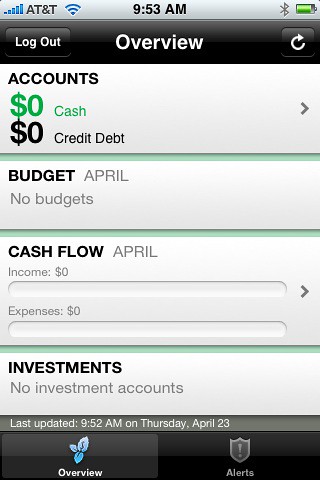When you're going to school, it is easy to be drawn into both student and
personal loans. While having the money right now is extremely helpful, in the
long run it's a bad idea. Once you have to start paying back the loans, it can
become detrimental to your budget and your overall lifestyle. The best thing to
do is to work toward graduating as debt-free as possible. Here are a few great
ways to keep your loan debts small, or even nonexistant.
Find Great
Scholarships
Image via Flickr by Saad Faruque
One of the best ways to work your way through school without debt is to get as many great scholarships as possible. Schools such as Wake Forest University offer scholarships for students with financial need. However, there are other scholarships you can seek out. If you are good at an art or sport, try for scholarships based on these. There are also options for minority students. You can even find scholarships for attributes, such as those for left-handed students.
Invest Wisely
Another option is to make the money you have work for you. Look into investing your money, so that you are getting interest
payments. In some cases, you may start getting a return long before your
student loans come due. Watching the markets and investing wisely is a great
way to make money while you're going to school. While this may not seem
feasible to everyone, keep in mind that you can start investing with just a
small amount of money. Then you can use the interest payments that you receive
to add to your investment portfolio.
Get a Second Job
Paying for your own way through college is difficult. However, if you get a
second job instead of taking out loans, you'll be happier in the long run. If
you are able to pay for your schooling as you're going, you're going to be able
to start your post-school life more quickly and easily. Working full-time, or
even working two jobs while taking classes isn't easy. However, one option is
to take your classes online, allowing you to study at your own hours. Another
option is to take fewer classes. This extends how long you are in school, but
allows you more freedom from debt.
Get Grants
There are many grants for students. Some are government
grants, and others are private. Either way, this is money that you can use
toward school that you don't have to pay back. If you are working or you have
parents who are, look into whether the companies they work for offer education
grants. Make sure to apply for government grants that are available to you. For
example, the Pell grant is perfect for those who are going back to school later
in life.
While it's tempting to get loans, there are better options to get yourself through school. When you graduate debt free, you can continue with your life without having the burden of payments hanging over your head. Consider the best ways you can get through your schooling and you'll finish without tens of thousands of dollars in loans.
Find Great
Scholarships
Image via Flickr by Saad FaruqueOne of the best ways to work your way through school without debt is to get as many great scholarships as possible. Schools such as Wake Forest University offer scholarships for students with financial need. However, there are other scholarships you can seek out. If you are good at an art or sport, try for scholarships based on these. There are also options for minority students. You can even find scholarships for attributes, such as those for left-handed students.
Invest Wisely
Another option is to make the money you have work for you. Look into investing your money, so that you are getting interest
payments. In some cases, you may start getting a return long before your
student loans come due. Watching the markets and investing wisely is a great
way to make money while you're going to school. While this may not seem
feasible to everyone, keep in mind that you can start investing with just a
small amount of money. Then you can use the interest payments that you receive
to add to your investment portfolio.
Get a Second Job
Paying for your own way through college is difficult. However, if you get a
second job instead of taking out loans, you'll be happier in the long run. If
you are able to pay for your schooling as you're going, you're going to be able
to start your post-school life more quickly and easily. Working full-time, or
even working two jobs while taking classes isn't easy. However, one option is
to take your classes online, allowing you to study at your own hours. Another
option is to take fewer classes. This extends how long you are in school, but
allows you more freedom from debt.
Get Grants
There are many grants for students. Some are government
grants, and others are private. Either way, this is money that you can use
toward school that you don't have to pay back. If you are working or you have
parents who are, look into whether the companies they work for offer education
grants. Make sure to apply for government grants that are available to you. For
example, the Pell grant is perfect for those who are going back to school later
in life.While it's tempting to get loans, there are better options to get yourself through school. When you graduate debt free, you can continue with your life without having the burden of payments hanging over your head. Consider the best ways you can get through your schooling and you'll finish without tens of thousands of dollars in loans.






